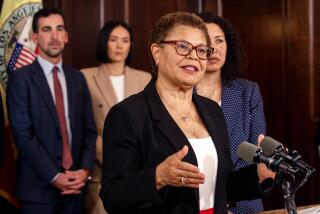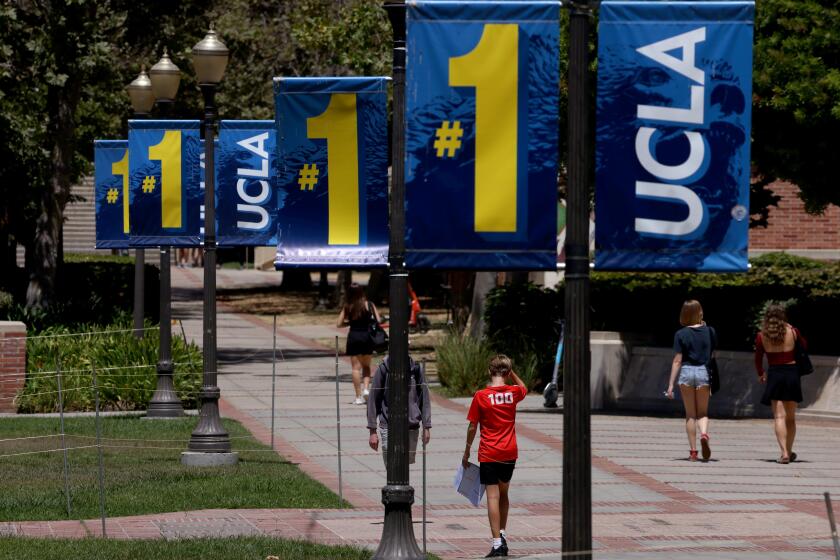2 Sides Submit Secession Proposals
- Share via
The two camps haggling over Valley secession offered sharply divergent blueprints Friday for splitting up Los Angeles.
Valley VOTE, the group leading the breakaway bid, and the city of Los Angeles stumbled over the same sticking point that muddles many divorces: how to divide assets.
Both sides submitted their proposed terms for a Valley city Friday--plans that remained miles apart over whether and when the new city would take over assets ranging from police stations to airports.
Proposing Dec. 16, 2002, as the prospective city’s birthday, Valley VOTE insisted that the fledgling city assume ownership of police, fire, animal services, streets, parks and library buildings and equipment from the beginning. But the city of Los Angeles wants to keep those assets at least through the first few years after the breakup, and relinquish them only under certain conditions.
Both sides submitted their proposals Friday afternoon to the Local Agency Formation Commission, the county agency that is considering whether a breakup should be put to voters in a 2002 citywide vote. LAFCO will use the dueling documents to draft terms for both parties to evaluate.
City’s First Blueprint on Valley Breakaway
The new plans mark the first time that Los Angeles, which has doggedly fought secession, has offered a blueprint showing how the city could be broken apart. Six months ago, the city released a 925-page report contending that a breakup could wreak severe financial damage on both parties.
Tim McOsker, chief of staff for Mayor James K. Hahn and a lead negotiator for the city, accused Valley VOTE of backpedaling away from a tentative deal on assets reached earlier this week.
“It seems like they’re going backwards in their negotiations,” he said. “We remain far apart on the issue of assets.”
But Valley VOTE President Jeff Brain said his group never agreed to a key condition proposed by Los Angeles negotiators: that if the new Valley city hires Los Angeles to provide municipal services, Los Angeles would keep whatever assets needed to do the job.
“We have repeatedly said at the table that we want the assets turned over at the start,” Brain said. “We want that all worked out up front.”
Secession Backers Seek to Keep Utilities
The city and Valley VOTE also disagreed over the fate of regional utilities such as water and power systems and sewage-treatment plants. The city intends to hang on to all these networks, while secessionists want a proportional share for the Valley. Valley VOTE also laid claim to Van Nuys Airport.
The breakup plan offered by Los Angeles also stipulates that the Valley would take on its share of outstanding citywide liabilities, such as construction debts or legal judgments.
“We would not transfer over assets until the city is satisfied that . . . the Valley will pay its share,” McOsker said. Both parties agreed that should voters approve a breakup, a transition period will be necessary. Valley VOTE suggested that the period end on June 30, 2005, while the city favors a timeline of a year or less. During that time, it is expected that Los Angeles would continue to provide municipal services for the Valley.
Under state law, LAFCO is responsible for evaluating the financial impact of a possible municipal divorce, and if it is found to meet state requirements, then decide whether and when voters should be asked to decide the issue.
More to Read
Sign up for Essential California
The most important California stories and recommendations in your inbox every morning.
You may occasionally receive promotional content from the Los Angeles Times.













